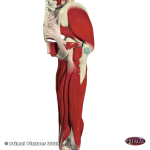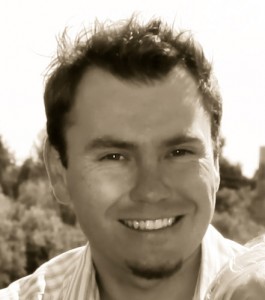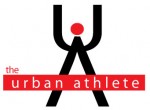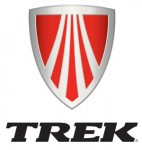Greg Lehman BKin, MSc, DC, MScPT
A diverse, honest approach for a diversity of patients
Chiropractor DC
Strength and Conditioning Specialist
Acupuncture Provider
Spine and Exercise Biomechanics Expert (MSc and BKin)
Active Release Techniques
Clinical Focus
Sport Injury - Persistent Pain Problems - Post Surgical Rehabiitation
Areas of Expertise
Running Injury/Biomechanics
Golf Injuries and Biomechanics
Soft tissue therapy for complex pain syndromes
Exercise prescription
Clinical Approach
Most of my time with patients is spent one-on-one using manual therapy techniques and education. I try to support and amplify any positive results I get from manual therapy through the judicious application of strength and conditioning protocols. I use these principles to rehabilitate and improve the performance of my patients.
Am I different from other health care providers?
 I try to be, or at least a little bit better everyday. While, I do the same techniques and treatments as many I just don’t believe in “selling” my treatment to patients with a lot of theories passed off as facts about the body. I question everything I say and continually read and reflect on what I know or think I know. I am probably more obsessed with what I don’t know. You probably won’t hear me tell you that your SI joint is stuck, your pelvis is unlevel, you overpronate, your glutes are inhibited and your myofascia is riddled with adhesions and scar tissue. I am certainly not going to tell you that the wee bit of arthritis you have is causing all your problems. These things occur sometimes but they are often not related to dysfunction. Most disconcerting to me, yet convenient for other therapists, is that these “dysfunctions” also seem to correlate with longer treatment plans. The body is not something that always need correcting…we just need to stimulate it to adapt or modify negative stress on it and it takes of itself.
I try to be, or at least a little bit better everyday. While, I do the same techniques and treatments as many I just don’t believe in “selling” my treatment to patients with a lot of theories passed off as facts about the body. I question everything I say and continually read and reflect on what I know or think I know. I am probably more obsessed with what I don’t know. You probably won’t hear me tell you that your SI joint is stuck, your pelvis is unlevel, you overpronate, your glutes are inhibited and your myofascia is riddled with adhesions and scar tissue. I am certainly not going to tell you that the wee bit of arthritis you have is causing all your problems. These things occur sometimes but they are often not related to dysfunction. Most disconcerting to me, yet convenient for other therapists, is that these “dysfunctions” also seem to correlate with longer treatment plans. The body is not something that always need correcting…we just need to stimulate it to adapt or modify negative stress on it and it takes of itself.
I think most people can get better with good advice, behaviour modification (e.g if you are a runner we work to identify training variables that might be injuring you), appropriate exercise prescription and some one on one manual therapy.
I tend to question everything so you might hear me often say that the things you have been told from other therapists are poppycock. This is not to say that I have the answers I just don’t believe in snowballing my patients with medical jargon and theories that only have a superficial grasp of body mechanics. People’s pain or dysfunction don’t fall into simple categories.
I try to learn a great deal from my patients as I believe they have a lot of insight into their condition.
On a personal note my wife tells me that I am the most serious, non-serious (aka - slow) runner that is out there.
Longwinded and even more arrogant bio
I have an interesting educational combination of physiotherapy, chiropractic and strength and conditioning training. I have spent 2 1/2 years completing a MSc in spine biomechanics, 4 full time years in chiropractic college (spending more than 15 hours per week for four years practicing manual therapy) and seven years working as a researcher in exercise and clinical biomechanics. After working for several years I spent an additional 2 years obtaining a MSc in Physiotherapy (Queen’s)
Awards and Academic Pursuits
I have been in the rehabilitation field for more than 15 years. Following my undergraduate degree in Kinesiology (4 full time University years) I was awarded the Canadian Society for Exercise Physiology Gold Medal for highest academic performance in Kinesiology. This degree allowed me to obtain certification as a Strength and Conditioning Specialist and Certified Fitness Appraiser and I have worked as a Strength and Conditioning coach for Sir Wilfrid University’s Men’s Basketball team and for Queen’s University Women’s Varsity Hockey Team.
My success in university resulted in being awarded a graduate scholarship (NSERC) to Waterloo University to be 1 of only 2 Masters students studying with Dr Stu McGill, a world leader in Spine Biomechanics, exercise prescription and athletic performance.
As a faculty member at the Canadian Memorial Chiropractic College I developed a research program that produced more than 20 publications on exercise biomechanics, golf fitness and the science of manual therapy. I taught more than 25 graduate students in Spine Biomechanics and Research Instrumentation and supervised more than 50 students and 20 undegraduate research theses.
I was subsequently awarded a Researcher of the Year award by the Ontario Chiropractic Association.
Continuing Education
While still in private practice I obtained a full time MSc degree in Physiotherapy from Queens University. While other professionals will pursue ongoing education with weekend seminars I have dedicated more than 12 years of full time University education to just start the process of being a qualified and unique health professional. Add two kids into that and you can see it was a busy but very rewarding time.
I have years of experience treating the full spectrum of aches and pains - from internationally ranked marthoners to individuals with chronic pain following a knee replacement. I utilize soft tissue treatment techniques (ART, myofascial release, nerve glides), corrective exercise, biomechanical analyses, manual therapy (both chiropractic and physiotherapy), Contemporary Acupuncture and pain relieving modalities for a comprehensive treatment strategy.
Academic Credentials
AWARDS/SPECIAL HONORS
1.Recipient: Ontario Chiropractic Association Professional Service Award (2006): Research
2. National Sciences and Engineering Research Council (NSERC) Graduate Scholarship (1996-98) $33,800
3. CMCC Internal Research competition: Spine Biomechanics Infrastructure Funding (2001) $20,000
4. Canadian Society for Exercise Physiology Gold Medal for highest academic performance in Kinesiology (1996)
TEACHING EXPERIENCE
2007-2008 Professor, Occupational Health and Wellness Course St. Lawrence College
2003-2008 Assistant Professor, Graduate Studies and Research Department, Canadian Memorial Chiropractic College (part time)
2003 – 2004 Tutor, Clinical Diagnosis. CD 1301, CD2301, CD 3303
2001-2004 Ergonomics Guest Lecturer, Undergraduate Program in Biomechanics, Canadian Memorial Chiropractic College
2000-2008 Lecturer & Course Coordinator, Graduate Studies and Research Department,Canadian Memorial Chiropractic College (CMCC);Spine Biomechanics and Research Instrumentation GS 507
Course covers injury biomechanics, spine stability, ergonomic principles and rehabilitation concepts
RESEARCH EXPERIENCE
2000 – 2008 Research Associate/Assistant Professor, Graduate Studies and Research, Canadian Memorial Chiropractic College (CMCC)
This appointment involved the designing, conducting and publishing of biomechanical research projects, equipment acquisition and training of students in conducting biomechanical research.
1998-1999 Clinic Scientist, University of Waterloo-Canadian Memorial Chiropractic College Research Clinic, Waterloo ON
PUBLICATIONS
Chapters in Books
Colloca CJ, Keller TS, Lehman, GJ, Harrison DD, Harrison DE. The use of spine measurement instruments in clinical practice. In: Haldeman, S, ed. Principles and Practice of Chiropractic, 3rd Edition. Norwalk, CT: Appleton & Lange, 2004
Refereed Journal Articles
Lehman GJ: Kinesiological Research: The influence of spinal manipulation on surface EMG: Invited Review. Journal of Electromyograph and Kinesiology. In press
Lehman GJ: An unstable surface is not a sufficient condition for increases in muscle activation. Journal of the Canadian Chiropractic Association.
Lehman GJ, Brandon MacMillan, Ian MacIntyre, Michael Chivers, Mark Fluter , Shoulder muscle EMG activity during push up variations on and off a Swiss ball. Dynamic Medicine 2006, 5:7 (9 June 2020)
Lehman GJ: Resistance training for performance and injury prevention in golf. Journal of Canadian Chiropractic Association 2006; 50(1) 27-42
Lehman GJ. Trunk and hip muscle recruitment patterns during prone leg extension following a lateral ankle sprain: A prospective case study pre and post injury. Chiropr Osteopat. 2006 Feb 27: 14:4
Lehman GJ, Story S, Mabee R. Influence of static lumbar flexion on the trunk muscle’s response to sudden arm movements. Chiropr Osteopat. 2005 Nov 23;13(1):23
Lehman GJ. The influence of grip width and forearm pronation/supination on upper-body myoelectric activity during the flat bench press. J Strength Cond Res. 2005 Aug;19(3):587-91.
Lehman GJ, Hoda W, Oliver S. Trunk muscle activity during bridging exercises on and off a Swissball. Chiropr Osteopat. 2005 Jul 30;13:14.
Lehman GJ, Trish Gordon, Jo Langley, Patricia Pemrose, Sarah Tregaskis. Replacing a Swiss ball for an exercise bench causes variable changes in trunk muscle activity during the performance of upper limb strength exercises. Dynamic Medicine 2005, 4:6 (3Jun2005)
Lehman GJ. The use of non-amplitude components of the myoelectric signal in identifying differences in function between the low back injured and controls. J Can Chiropr Assoc. 2004; 48(3) 225-234.
Lehman GJ, Buchan DD, Lundy A, Myers N, Nalborczyk A.Variations in muscle activation levels during traditional latissimus dorsi weight training exercises: An experimental study. Dyn Med. 2004 Jun 30;3(1):4.
Lehman GJ , Lennon D, Rayfield B, Poschar M, Tressider B. Muscle recruitment patterns during the prone leg extension test. BMC Musculoskeletal Disorders 2004, 5:3 (10Feb2004)
Lehman GJ. Biomechanical assessments of lumbar spinal function. How low back pain sufferers differ from normals. Implications for outcome measures research. Part I: Kinematic assessments of lumbar function.J Manipulative Physiol Ther. 2004 Jan;27(1):57-62.
Lehman GJ. Clinical considerations in the use of surface electromyography: Three experimental studies. J Manipulative Physiol Ther. 2002 Jun;25(5):293-9..
Lehman GJ, Vernon H & McGill SM: The effects of a mechanical pain stimulus on erector spine activity before and after a spinal manipulation in chronic low back pain patients: A preliminary investigation. J Manipulative Physiol Ther. 2001 Jul-Aug;24(6):402-6.
Lehman GJ & McGill SM: Spinal manipulation causes variable changes in trunk kinematics and associated EMG. Clinical Biomechanics 2001 May: 16(4): 293-9.
Lehman GJ & McGill SM: Quantification of the differences in EMG magnitude between the upper and lower rectus abdominis during selected trunk exercises. Physical Therapy 2001 May;81(5):1096-101.
Lehman GJ & McGill SM: Proof of Principle: The Importance of Normalization in Surface EMG. JMPT 1999: 22(7): 444-446.
Lehman GJ & McGill SM: The influence of a spinal manipulation on lumbar kinematics and EMG during simple and complex tasks: A Case Study. JMPT 1999; 22(9):576-81
Theses
Master of Science thesis: “The influence of a lumbar spinal manipulation on trunk kinematics and associated trunk EMG”, 1998
Bachelor of Kinesiology thesis: “Occupational Biomechanics & Ergonomics Handbook”, 1996




